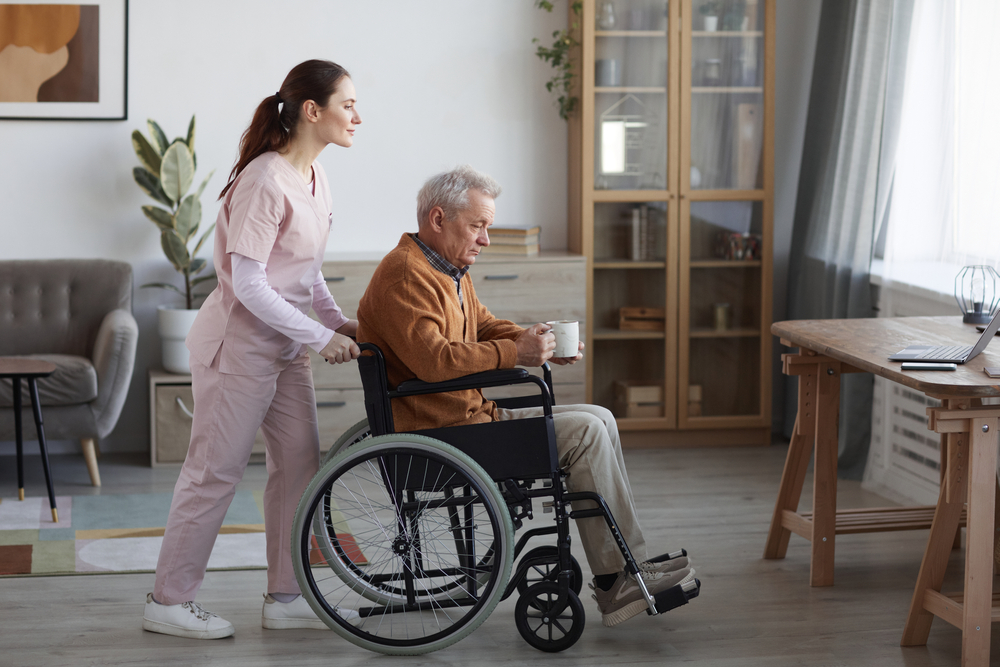An article published in JAMA discusses the results of a survey to understand the “acceptability” of hospital-at-home care and the “potential capacity for caregiver burden.” Hospital at home provides hospital-level care for patients “with low to moderate acuity in the home, using remote patient-monitoring tools, in-home infusions, and daily in-person and telehealth visits by clinicians. Family members provide low-level care for patients, such as managing medications.”
Currently, 322 hospitals across 37 states are approved to provide hospital-at-home care. Although the “Acute Hospital Care at Home” waiver expired when the COVID-19 public health emergency ended, Congress extended the waiver through December 31, 2024, with a requirement that the Centers for Medicare and Medicaid Services (CMS) conduct a comprehensive study by September 30, 2024. As policymakers consider codifying the waiver in 2025, they need to understand acceptability of hospital-at-home care and potential capacity for caregiver burden. The study published in JAMA surveyed a representative US population about aspects of hospital-at-home care, including acceptability and willingness to perform caregiving tasks.
In a nutshell, over 1,000 respondents agreed that people recover faster at home than in the hospital and that most patients would probably rather be at home than in the hospital. A large majority of potential caregivers were willing to provide medications but less than half were comfortable with things like changing feeding tubes. The findings were consistent across diverse populations, household incomes and educational level.
I do not think that anyone is surprised by the results, but they might tell us more about hospital care than they do at-home care, and there’s a flaw in the assumption. Care has already largely moved to the home setting – or at least the subacute setting. That’s particularly true of wound care, as we saw from the recent analysis of Medicare claims data. The flaw in the assumption is that the care being provided in the home is “low to moderate” in terms of acuity. As anyone reading this knows, very sick patients are discharged from the hospital into the care of their families every day. Patients fresh from cardiac bypass and other major operations are sent home when they are barely able to get from the car into their bed at home. Family members are giving injections, emptying surgical drains, and doing dressing changes on complex wounds. More than ten years ago, my Mother was discharged on a Friday still requiring intravenous antibiotics and home health services had not been set up. I made several frantic calls on Saturday morning and ended up with a special infusion pharmacist who proceeded to tell me over the phone how to dilute and hang the IV antibiotics they were sending to the house. I said, “Hey, I am a just a doctor! I am not a NURSE! I have no idea how to do this, and you should not be asking me to!”
For years patients have been sent home with moderate to high acuity problems – to be cared for largely by their family members. I have previously posted blogs about a friend whose husband is at home on a ventilator which she manages singlehandedly. Why? Because the home health services that are supposed to be involved either refuse to provide services at all or do not show up. I choked when I read that care at home provides, “daily in-person and telehealth visits by clinicians.” DAILY? Really? Truthfully, I can’t blame the home health agencies for refusing to care for patients with complex medical needs given the cutbacks to their capitated rates and the documentation burdens they deal with. But as long as the home health agencies can pick and choose who they take, it’s hard to imagine how this is going to work.
The survey is also a referendum on in-hospital care. For many different reasons, the quality of in-hospital care is at an all time low. My own husband died of a drug reaction which I diagnosed but for which I was unable to get the hospital staff (including the physicians) to respond, it being a weekend. The reason that most of us spend the night in the hospital with our loved ones is that we no longer trust the hospital to care for them. Maybe the survey in JAMA and the deliberations in Congress will improve funding for at home services. Whatever Congress does, very sick patients are at home being cared for by their family members. The real and long term challenge will indeed be around managing caregiver burden and what that means to the work force.
–Caroline

Dr. Fife is a world renowned wound care physician dedicated to improving patient outcomes through quality driven care. Please visit my blog at CarolineFifeMD.com and my Youtube channel at https://www.youtube.com/c/carolinefifemd/videos
The opinions, comments, and content expressed or implied in my statements are solely my own and do not necessarily reflect the position or views of Intellicure or any of the boards on which I serve.



